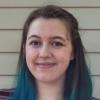WASHINGTON, D.C. (April 18, 2024) — Two University of Kentucky researchers have been named American Association for the Advancement of Science Fellows, a distinguished lifetime honor within the scientific community.
Pradeep Kachroo, Ph.D., a professor in the Department of Plant Pathology in the Martin-Gatton College of Agriculture, Food and Environment, and Yang-Tse Cheng, Ph.D., the Frank J. Derbyshire Professor of Materials Engineering in the Stanley and Karen Pigman College of Engineering and professor of physics and astronomy in the




